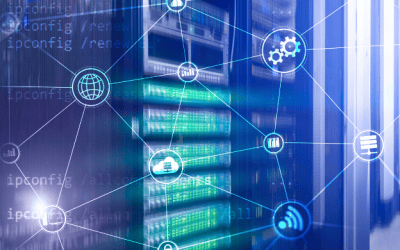According to the World Economic Forum Global Risk Report, the top three risks worldwide are predictable infectious disease, income inequality, and extreme weather. Surprisingly, the fourth is cybersecurity. Directly behind some of the most known and discussed risks globally, cybersecurity falls within the top 5 global risks. Looking to 2023, it is imperative to build a proactive strategy to protect your business and plan for 2023 cybersecurity trends.
This article breaks down the top cybersecurity trends for the year.
Growth in Artificial Intelligence (AI) and Cybersecurity
Artificial Intelligence (AI) has rapidly grown over the last few years. AI can review all data moving across networks in real time and learn to recognize patterns that indicate a potential threat. Machine learning algorithms are frequently used in cybersecurity as the number of attempted cyberattacks grows, and human cybersecurity experts cannot react to each one and predict where the next attack will occur. According to IBM, companies that use AI and automation to detect and respond to data breaches save an average of $3 million compared to those that don’t.
While AI is a great tool to help organizations ease the need for 24/7 human support, it also opens the door to cybercriminals who have become proficient at using it. For example, threat actors use AI to create large numbers of personalized phishing emails designed to trick recipients into handing over sensitive information. Newer AI has been used to ‘clone’ the voice of an organization’s executives to authorize fraudulent transactions.
It’s been predicted that by 2030 the market for AI cybersecurity products will be worth $139 billion – close to a tenfold increase on the value of the 2021 market.
Complex Supply Chain Security Will Continue to Rise
Today, organizations depend heavily on the global hyperconnected supply chain that is required to run their day-to-day operations. Supply chain security is a critical necessity for connecting organizations in 2023.
“Organizations now require a holistic approach which includes implementing best practice techniques around ingesting Software Bill of Materials (SBOMs) and correlating the output to emerging vulnerabilities, identifying risk indicators such as the geographical origin of the underlying components, and providing visibility to transitive dependencies,” stated Sharon Chand, Deloitte US Cyber Risk Secure Supply Chain leader.
In the coming year, organizations will begin to shift focus on deploying and operating identity and access management (IAM) and Zero-Trust capabilities that will help enforce authorized third-party access to data and systems. IAM and Zero-Trust will also help reduce the consequences of a compromised third party.
Threats to supply chain security continue to evolve in complexity, frequency, and scale. Your organization must continue innovating and maturing your security posture to protect not only your assets but your customers as well.
Prioritizing Remote Work Cybersecurity
The work-from-home and the remote work atmosphere is a trend that is here to stay as we move into 2023. Millions of devices worldwide have been used from home and remote work since the start of the pandemic almost three years ago.
Before the pandemic, most organizations were fully staffed in the office, making it easy for IT teams to regularly check company laptops and smartphones for spyware and malware and update with the latest versions of anti-virus software. Over the last few years, a new set of challenges emerged as millions of employees shifted to remote work. Employees connecting to networks with non-secured devices can open them up to accidentally falling victim to phishing attacks.
Additionally, remote work opens organizations to ransomware attacks, where software is injected into networks that compromise confidential, valuable data unless organizations pay ransom to the attackers. The risk of this also increases in remote working situations, where it’s more likely that devices may be left unattended and open.
Organizations will need to ensure they understand the challenges and risks of cybersecurity for remote workers and can address them in the context of their business plans. Best cybersecurity practices are bolstered by robust company policies, effective staff training, and the availability of the right IT tools and systems to carry out work securely and productively.
Adopting a Security Aware Culture Across Your Organization
Following the prioritization of remote work, it’s essential to mandate cybersecurity education across an organization. According to Horizons, many insider cybersecurity breaches are reportedly a result of carelessness and negligence caused by stress, skipping, or overriding security processes for convenience or to avoid slowing down workflows. Insider threats continue to remain one of the top causes of cyberattacks, making this trend one of the most important to implement in 2023.
2022 proved that it is no longer good enough for organizations to consider cybersecurity an issue for the IT team to take care of. According to DTEX Insider Threat Report, in 2021, we saw a 72% increase in insider threats compared to the year prior. This statistic alone should encourage organizations to work towards initiating and fostering a culture of awareness around the seriousness of cyber threats. Taking basic precautions to ensure safety should be vital in everyone’s job description in 2023.
Cloud Security Will Mature at an Accelerated Pace
Many organizations have been inevitably forced to move to the cloud and modernize their existing applications. Deloitte notes that with this evolution, businesses can grow through accelerated development, enhanced scalability and collaboration, business agility, new revenue streams, and greater technical resilience.
As cloud adoption accelerates, it’s critical to manage your security risks within your growing number of cloud services. One single misconfiguration can lead to a severe data breach. Migrating to the cloud is a data-intensive process that requires a clear path, the right level of skill, and a dedicated investment. However, organizations will have reliable, profitable, scalable services once completed. Interested in learning more about cloud security? Watch our webinar on identifying cloud vulnerabilities and hardening your cloud posture.
Attacks Against Critical Infrastructures Will Increase
Infrastructure is quickly becoming a target of choice for both individual and state-sponsored cybercriminals. Threat actors understand the value of disrupting systems that, in the past, were thought to be impenetrable. According to TrendMicro Incorporated, “89% of electricity, oil, gas, and manufacturing firms have experienced cyberattacks impacting production and energy supply over the past 12 months.”
Critical infrastructure providers are facing an unprecedented challenge with high risks. In the case of the Colonial Pipeline attack of 2021, the organization was forced to pay the cybercriminals roughly $4.4 million to restore their systems; however, we may see more devastating consequences from attacks on critical infrastructure. While necessary mandates have been put into place, unfortunately, the biggest motivator for organizations is often a direct attack. Scott Crawford, a security operations analyst at 451 Research, stated, ‘while there have been prior incidents that brought more attention to the need for infrastructure protection, it may take another attack before some of them get done.”
AgileBlue will be hosting a webinar Tuesday, January 31st at 11AM EST to review and discuss the ‘Top Cybersecurity Trends to Look for in 2023’. Join us by registering here.




